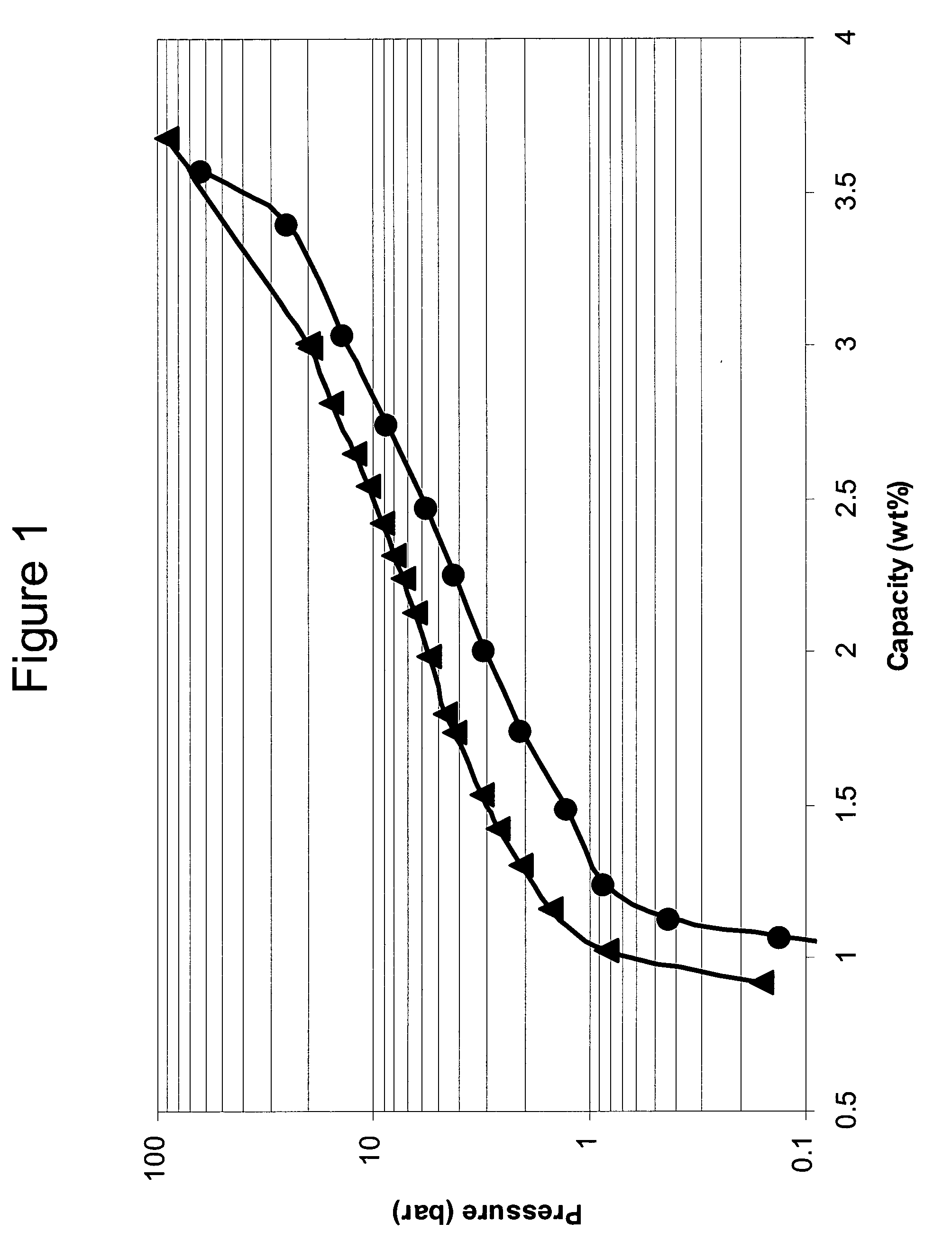Hydrogen storage alloys providing for the reversible storage of hydrogen at low temperatures
a technology of hydrogen storage and low temperature, applied in the field of hydrogen storage alloys, can solve the problems of lack of lightweight hydrogen storage medium, inability to meet the needs of hydrogen storage, and inability to meet the requirements of hydrogen storage,
- Summary
- Abstract
- Description
- Claims
- Application Information
AI Technical Summary
Benefits of technology
Problems solved by technology
Method used
Image
Examples
example
[0035] A hydrogen storage alloy in accordance with the present invention was prepared and tested to determine its hydrogen absorption properties. The alloy was prepared by arc melting of the industrial grade elements (Ti: 27.37 gram; V: 29.13 gram; Cr: 37.93 gram; Mn: 3.25 gram; Co:2.32 gram) in a water-cooled copper hearth in an argon atmosphere. The ingot was turned over and re-melted four times to ensure the compositional homogeneity. A 5.0 gram sample of the alloy was put into the sample chamber of a Pressure-Composition-Temperature (PCT) unit. The sample was heated to 350° C. under vacuum for 1 hour. Subsequently, hydrogen was introduced to 500 psi and it was cooled down to room temperature for activation. To obtain the hydrogen capacity zero point, the sample chamber was evacuated at 350° C. for 3 hours. A PCT cure for the alloy is shown in FIG. 11.
PUM
| Property | Measurement | Unit |
|---|---|---|
| temperatures | aaaaa | aaaaa |
| pressure | aaaaa | aaaaa |
| temperature | aaaaa | aaaaa |
Abstract
Description
Claims
Application Information
 Login to View More
Login to View More - R&D
- Intellectual Property
- Life Sciences
- Materials
- Tech Scout
- Unparalleled Data Quality
- Higher Quality Content
- 60% Fewer Hallucinations
Browse by: Latest US Patents, China's latest patents, Technical Efficacy Thesaurus, Application Domain, Technology Topic, Popular Technical Reports.
© 2025 PatSnap. All rights reserved.Legal|Privacy policy|Modern Slavery Act Transparency Statement|Sitemap|About US| Contact US: help@patsnap.com



